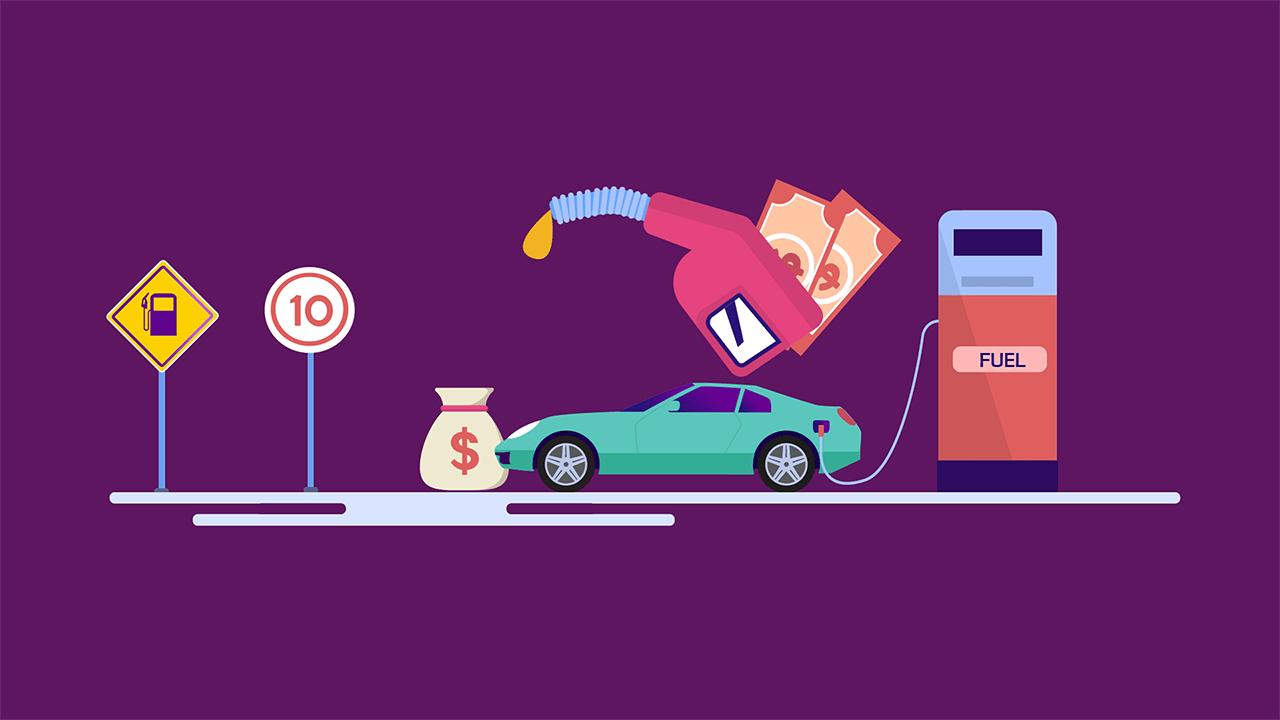Effortlessly Calculate Gas Mileage: Quick Guide for Your Car
By Umm e Hani on Apr 29, 2024
Contents
- How Many Gallons of Gas Does a Car Hold?
- Hybrid vs. Gas Mileage Calculator
- How Does Mileage Work on a Car?
- Step 1: Determine Your Car's Fuel Tank Capacity
- Step 2: Fill Your Gas Tank Completely
- Step 3: Reset Your Trip Odometer
- Step 4: Drive as You Normally Would
- Step 5: Refill Your Gas Tank Once the Fuel Gauge Indicates Low
- Step 6: Note the Distance Traveled and the Amount of Fuel Refilled
- Step 7: Calculate Your Car's Gas Mileage
- Step 8: Interpreting Your Gas Mileage
- That’s A Wrap!
Monitoring your car's gas mileage is important for understanding its fuel efficiency. You can also manage fuel expenses. By calculating average MPG for cars, you can gain valuable insights. Like how far your vehicle travels on a single gallon of gasoline etc. This information clears to make informed decisions about driving habits, fuel choices, and vehicle maintenance practices.
How Many Gallons of Gas Does a Car Hold?
The fuel tank capacity of a car varies depending on the make, model, and year of the vehicle. Typically, passenger cars can hold anywhere from 10 to 20 gallons of gasoline. SUVs, trucks, and minivans often have larger fuel tanks, ranging from 15 to 30 gallons or more.
Average Gas Mileage for a Car
The average gas mileage for a car in the United States is around 25 miles per gallon (MPG). However, this can vary significantly depending on the type of vehicle, driving habits, and road conditions. For instance, hybrid cars achieve higher MPG ratings, often exceeding 40 MPG. While larger SUVs and trucks may have lower MPG ratings, sometimes below 20 MPG.
Hybrid vs. Gas Mileage Calculator
Hybrid cars combine an electric motor with a gasoline engine. It result in improved fuel efficiency and higher MPG ratings compared to traditional gasoline-powered vehicles. When calculating gas mileage, hybrid cars are assessed based on their combined MPG. It factors in both electric and gasoline usage.
How Does Mileage Work on a Car?
A car's fuel efficiency is measured in MPG. It indicates how far the vehicle can travel on a single gallon of gasoline. Higher MPG ratings translate to better fuel economy, meaning you can drive more miles with less fuel. Conversely, lower MPG ratings indicate lower fuel efficiency. It result in more frequent refueling stops.
Now, Let's Calculate Your Car's Gas Mileage
Step 1: Determine Your Car's Fuel Tank Capacity
Refer to your car's owner's manual or manufacturer's website. It will help to find the exact fuel tank capacity of your vehicle. This information is typically stated in gallons or liters.
Step 2: Fill Your Gas Tank Completely
Locate a gas station and fill up your car's gas tank to its full capacity. Ensure the fuel gauge indicates a full tank or that the gas pump automatically stops once the tank is full.
Step 3: Reset Your Trip Odometer
After filling up, find the trip odometer on your car's dashboard and reset it to zero. This will allow you to track the distance you travel while monitoring your fuel consumption.
Step 4: Drive as You Normally Would
Drive your car, following your usual routes and driving habits. Avoid any significant changes in your driving behavior to maintain an accurate representation of your car's gas mileage under normal conditions.
Step 5: Refill Your Gas Tank Once the Fuel Gauge Indicates Low
Once the fuel gauge indicates that you are running low on gas, return to the same gas station where you initially filled up. Fill your car's gas tank to its full capacity again.
Step 6: Note the Distance Traveled and the Amount of Fuel Refilled
Record the distance you have traveled since resetting the trip odometer. This represents the number of miles driven during this fuel cycle. Additionally, note the amount of gasoline dispensed from the pump during the refill. This represents the number of gallons of fuel used during this fuel cycle.
Step 7: Calculate Your Car's Gas Mileage
To calculate your car's gas mileage, divide the total miles driven by the total gallons of fuel used. The resulting number represents your car's MPG rating for this particular fuel cycle.
Example Calculation
Miles driven: 300 miles
Gallons of fuel used: 12 gallons
Gas mileage: 300 miles / 12 gallons = 25 MPG
Step 8: Interpreting Your Gas Mileage
Once you have calculated your car's gas mileage, compare it to the average MPG rating for your vehicle type. If your MPG is below average, consider factors like:
- driving habits
- road conditions
- vehicle maintenance
Calculate your driving habits and make adjustments if necessary to improve your car's fuel efficiency.
That’s A Wrap!
Calculating your car's gas mileage is a simple yet effective way to gain control over your fuel consumption. By following these steps and monitoring your MPG regularly, you can identify areas for improvement. You can also make adjustments to enhance your car's fuel efficiency. Remember, even small changes in driving habits can significantly impact your fuel economy. It could lead to long-term savings and a more environmentally friendly driving experience.


